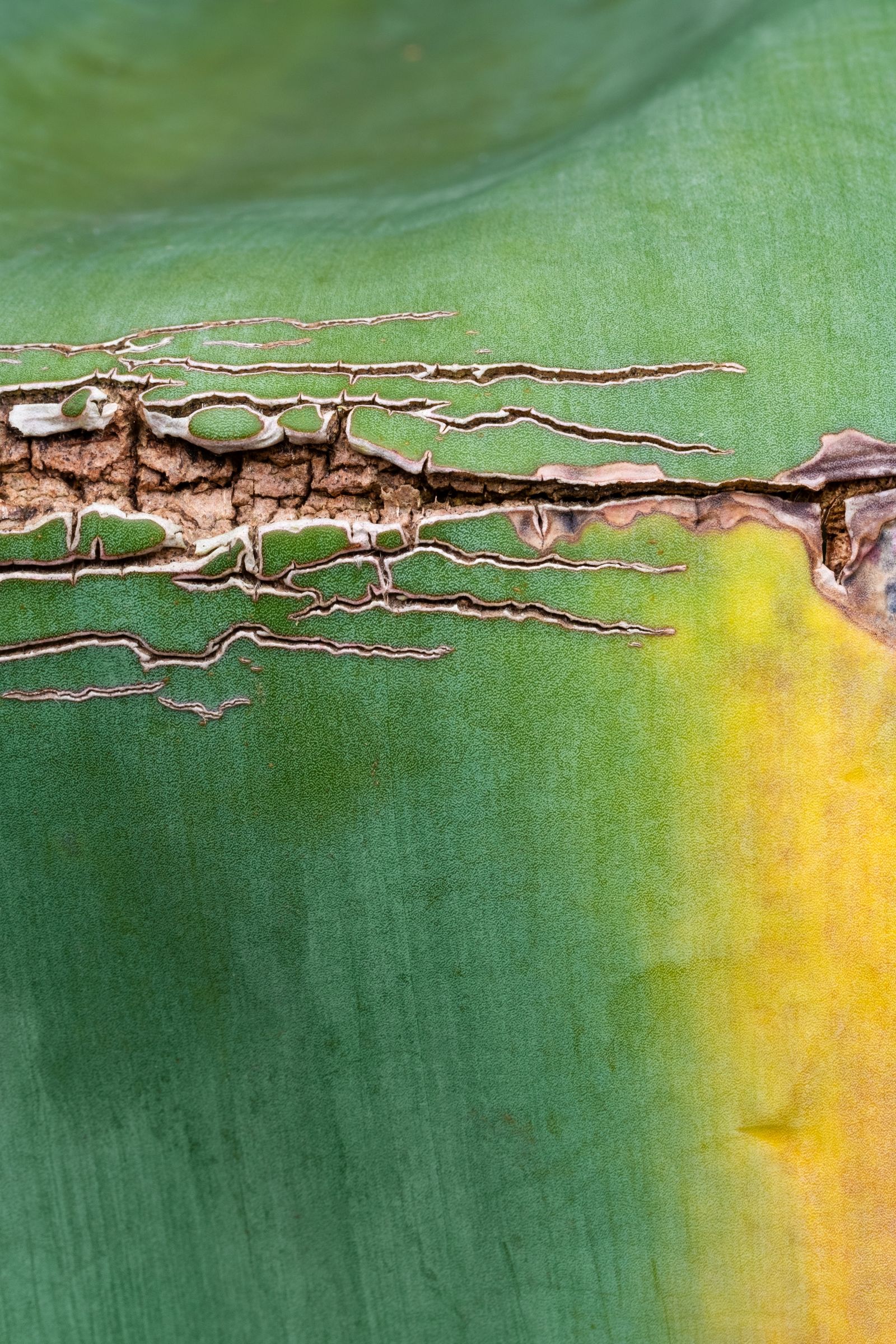Agave 1
Category
Macro
Location
Ventnor Botanic Garden, Isle of Wight
Gear
Fujifilm X-T2 with 80mm f/2.8 R LM OIS WR Macro lens ISO 200, 1/12sec at f/20
Description
Plants acquire scars through the very act of living. These scars can be beautiful, graphic and symbolic. They are a language of sorts, telling the story of how living things can survive (and sometimes even thrive) despite attacks from pests, diseases and human interference. There is often beauty in destruction. Plant Scars is a celebration of the gashes, grazes and knocks we all endure as living beings and, ultimately, their ability to transform us. It’s tempting to remove damaged or dying leaves to try and beautify a plant, but scars can be markers of progress, reminders of what has been endured, evidence of renewal and resilience. All the images in the Plant Scars series were taken within a few metres of each other at VBG (Ventnor Botanic Garden) on the Isle of Wight in 2021. At VBG many plants are left to self-regulate in ‘self-maintaining communities.’ With minimal interference these ecosystems attract ‘companion organisms’ such as parasites, fungi and rust – organisms that many gardeners try to discourage. With The Ventnor Method, gardeners and volunteers are actively discouraged from removing leaf litter, damaged stems and fronds. Scars, gashes and evidence of decay are openly displayed – not hidden from view or suppressed. With everything out in the open, the healing process can begin.
Photographer
Tracy Calder
Social Media
Instagram: tracy_calder_photo
Voting is now closed.
To limit fraudulent voting, you may only vote once per category per IP address.


